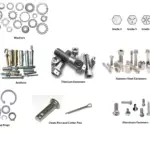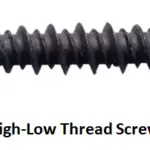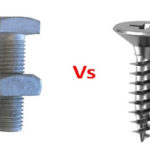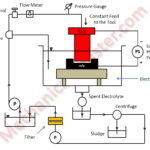In this article, we will discuss the difference between nuts and bolts. The nuts and bolts are the types of fasteners that are used in every manufacturing industry to join two parts together. Here we will try to learn all the possible differences between nuts and bolts.
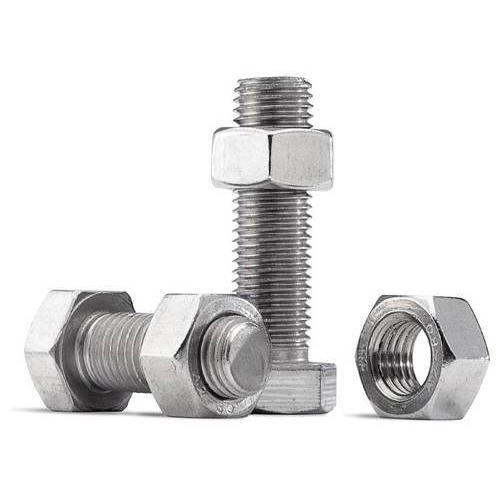 What is Nut?
What is Nut?
It is a type of fastener that has a threaded hole. It is used with the conjugation of a bolt. The two partners (i.e. nut and bolt) are held together by the combination of their thread frictions, slight stretching of the bolt and compression of the part to be joined together.
- The nuts come with a different locking mechanism which prevents the loosening due to the vibration of the machine parts or the parts which they joined.
- They are mostly having a circular cross-section.
- The nuts have internal threads so that it can be easily tightened on the bolt.
- The size of the nut is small as compared with the bolt.
- The nuts experience compressive forces. It is the compressive stress that leads to its failure.
- The various types of nuts are: Hex nut, Nylon insert lock nut, Jam nut, Nylon insert jam lock nut, Square nut, Cap nut, Acorn nut, T- nut, Kep nut, Castle nut, Wing nut, Flange nut, Slotted nut, Coupling nut, etc.
Also Read:
- 24 Most Common Types of Pliers and Their Uses (With Pictures)
- Different Types of Screws in Fastening Process
- Different Types of Screws Heads – That You Must Know
What is Bolt?
A Bolt is a threaded cylindrical rod which is used with a nut. It is used to join two pieces together with a nut. It is a type of fastener.
- A bolt is externally threaded. It may be fully threaded or partially threaded.
- The bolts are cylindrical in shape. They are the solid cylinders with a head. The solid cylindrical part is called the shank.
- The size of the bolt is large as compared with the nut.
- The bolts experiences tensile forces. It is the tensile stress that leads to its failure.
- The various types of bolts are Anchor bolt, Carriage bolt, Elevator bolt, Flange bolt, Hanger bolt, Hexagon bolt/Tap bolt, Lag bolt, Machine bolt, Plow bolt, Sex bolt, Shoulder bolt, Square head bolt, Stud bolt, Timber bolt, T-head bolt, Toggle bolt, U-bolt, J-bolt, Eye bolts, etc
Difference Between Nuts and Bolts in Tabular Form:
| S.no | Nuts | Bolts |
| 1. | The nut is a type of fastener which is always used with the bolt. | The bolt is a solid cylindrical fastener used with the nut. |
| 2. | The nuts are hollow circular cylinders with circular cross section. | The bolts are solid cylinders with circular cross section. |
| 3. | Nuts have internal threads. | The bolts have external threads. |
| 4. | They are smaller in size as compared with the bolts. | They are bigger in size as compared with the nuts. |
| 5. | They have lock mechanism to prevent loosening. | They don’t have any lock mechanism. |
| 6. | They do not have heads. | They have heads for the tightening and loosening. |
| 7. | The nuts experience compression forces on it and are generally failed due to compressive stresses. |
They experience tensile forces on it and are failed due to the tensile stresses. |
| 8. | The various types of nuts are: Hex nut, Nylon insert lock nut, Jam nut, Nylon insert jam lock nut, Square nut, Cap nut, Acorn nut, T- nut, Kep nut, Castle nut, Wing nut, Flange nut, Slotted nut, Coupling nut etc. |
The various types of bolts are: Anchor bolt, Carriage bolt, Elevator bolt, Flange bolt, Hanger bolt, Hexagon bolt/Tap bolt, Lag bolt, Machine bolt, Plow bolt, Sex bolt, Shoulder bolt, Square head bolt, Stud bolt, Timber bolt, T-head bolt, Toggle bolt, U-bolt, J-bolt, Eye bolts etc. |
This is all about the difference between nuts and bolts. If you find anything missing or incorrect then comment us. And if you find this article informative and useful, don’t forget to like and share it.

